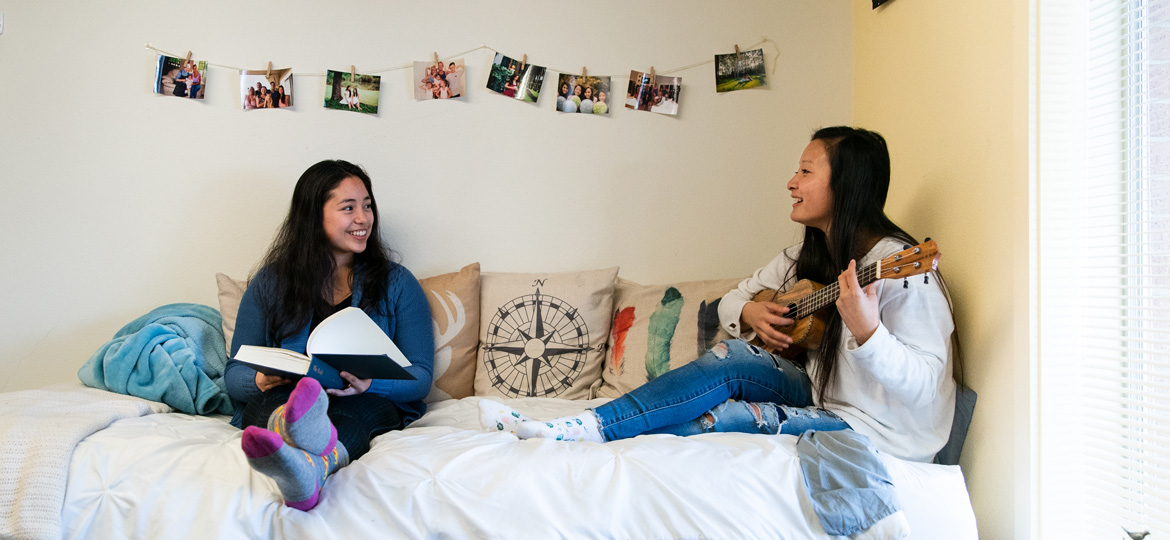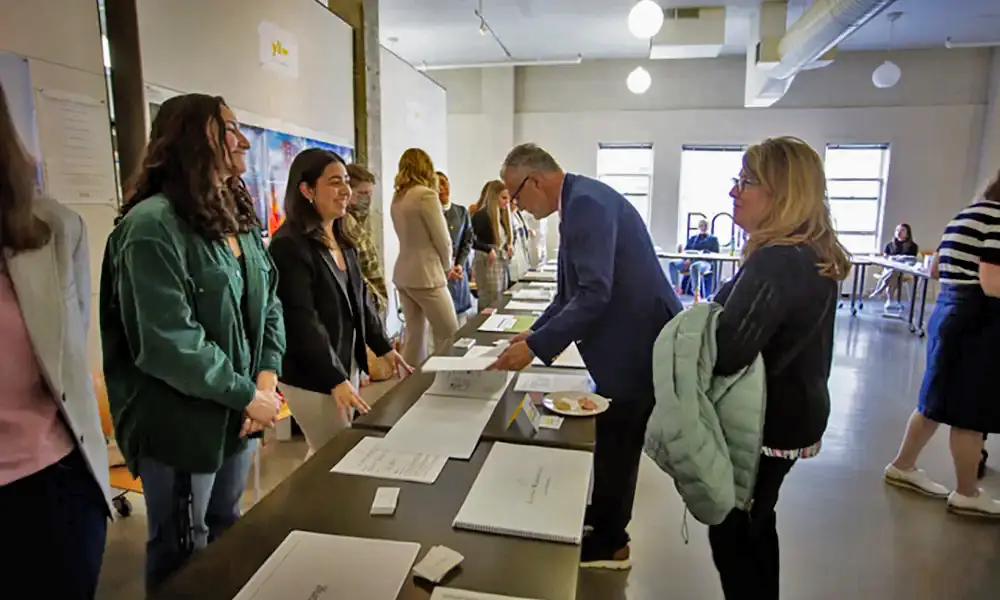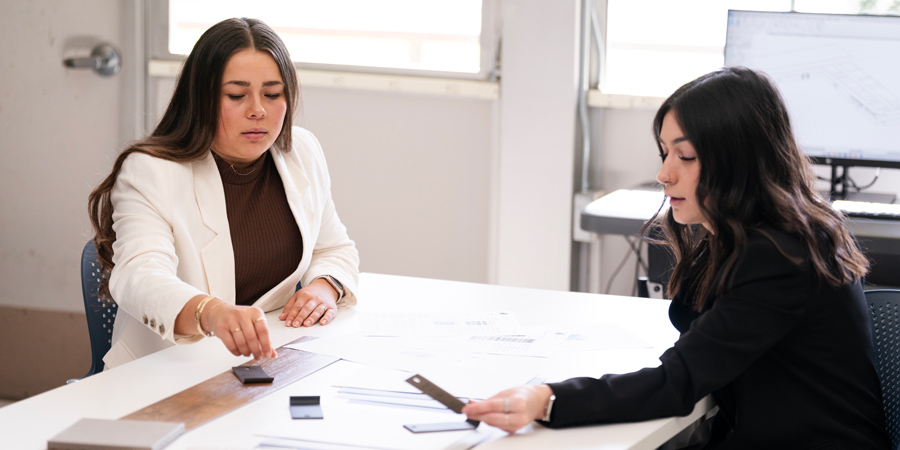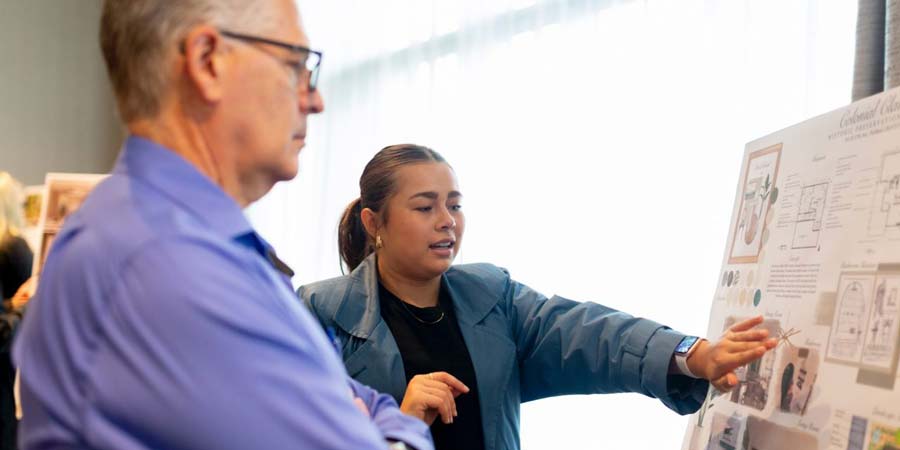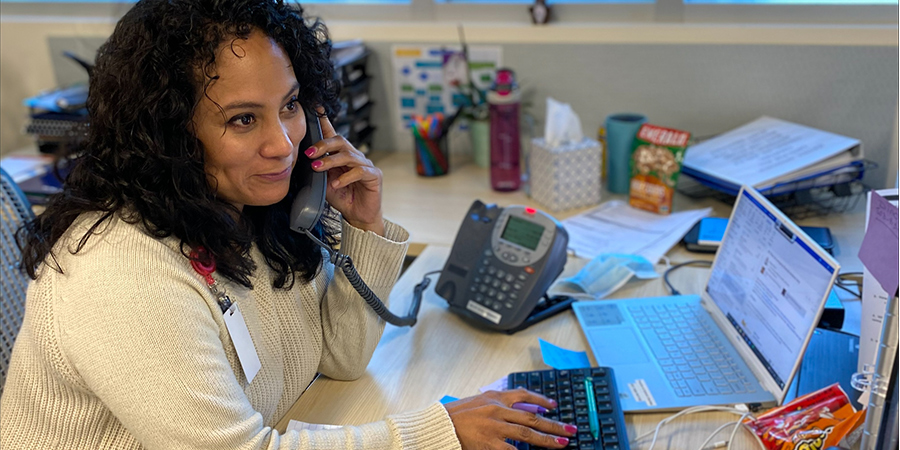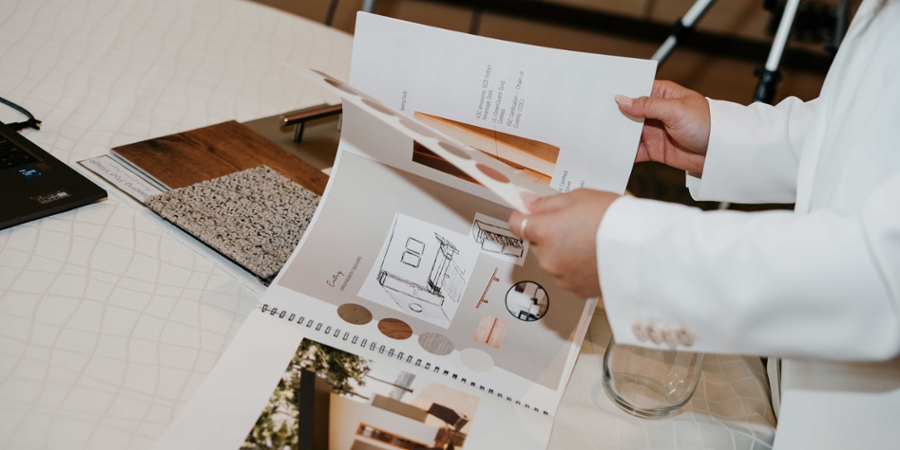
Service and Design: Designing for Houseless Populations
by Casey Martin
In collaboration with Portland State University’s architecture program, the residential design studio in the interior design major at George Fox designed interior concepts for sleeping pods for the houseless population of Forest Grove, Oregon.
This project focused on trauma-informed design, color psychology, sustainability and creating a true home for someone who has experience living on the streets for a significant time. The class talked with specialists in trauma-informed design and those who work with the Portland metro’s homeless population. Working in groups of four to five students, the class presented their final design solutions to industry reviewers and members of the community at The Allison Inn in Newberg in mid-October.
We asked two interior design students, Ilinahe Beatty and Julieanna Stafford, to share about their experience.
Question: What was the goal of this project and some of the parameters that you followed while designing it?
Julieanna: Our goal for this project was to design the interior space of a sleeping pod for the Sleeping Pod Village dedicated to the houseless population in Forest Grove. Some of the parameters that my team followed when designing this project was to create a sense of security, use sustainable materials, and use trauma-informed design.
Q: What did you learn through the process of this specific project?
Ilinahe: Through this process, I learned the importance of sustainability with locally sourced materials and how to incorporate trauma-informed design into a small space. This taught me to maximize the space and make smart design decisions that would best benefit the user because every inch of the pod was valuable to designing a functional, livable and comfortable space.
Julieanna: Our team was extremely passionate about trauma-informed design. We wanted to focus our pod design on everything we had researched. I learned so much about what trauma-informed design is, especially in this project, and my team really focused on this in our design.
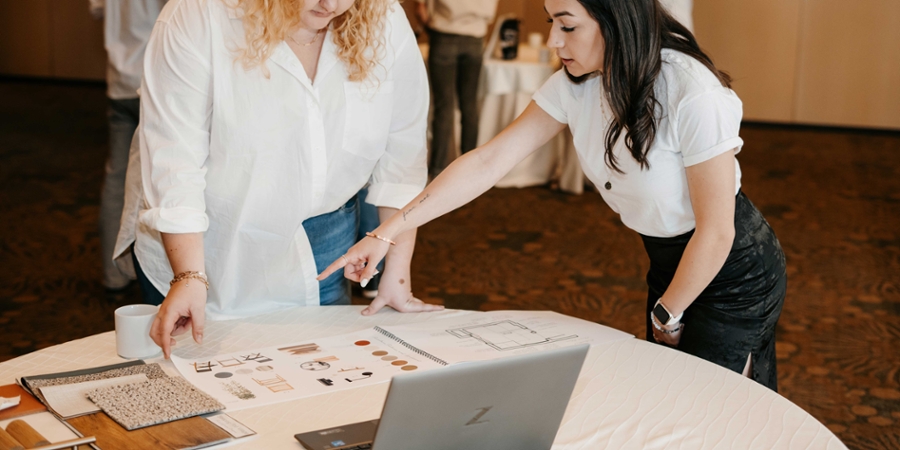
Q: Can you describe how the process was collaborating with your team throughout this project?
Ilinahe: For this type of project, it was great to collaborate with classmates because we were able to take the best ideas, expand them into greater detail, and present a unique pod that will suit the user well. This gave us the opportunity to dive deeper into the significance of each choice we made, from trauma-informed color choices to the use of sustainable products and a layout that provided storage while maximizing the space.
Julieanna: As a project manager, I wanted to make sure everyone felt heard and understood in team meetings. When it came to splitting up work and making decisions everyone had a voice and a say in the design. We had such a great team and really trusted each other in every task and design selection made.
Q: Can you talk a little bit about the interior design program and other projects that you’ve found especially valuable at Fox?
Ilinahe: I could not have asked for a better interior design program because it has challenged me and brought to light the different facets of interior design ,including residential, commercial, and international design. From the beginning of freshman year, the hands-on approach offers real-world experiences and the direct connections with design firms in the community allow exposure to internships and career work post-graduation.
Julieanna: The interior design program has been such a blessing in my life. I have really found my passion and such an amazing group of friends. We have such an amazing professor who truly puts students first and advocates for us always. I have loved every project we have worked on, but some of the ones I found to be most valuable include this Sleeping Pod Village, the Hyatt Centric Hotel in Portland, and the airport lounge where we got to select anywhere in the world to design a culturally centered airport lounge for the location we selected.
Q: How do you prepare for a presentation of your work and talk to industry reviewers in the field?
Julieanna: Our projects usually last about six weeks before our presentations. This makes presenting exciting and natural. We spend six to eight weeks on one project, and because of that we truly get to put our full hearts into every project. By the time we present, everyone is just excited to share what we’ve been working on and everything flows naturally. It’s such an amazing experience to present in front of industry professionals; they often are just as passionate and excited about our projects as we are.
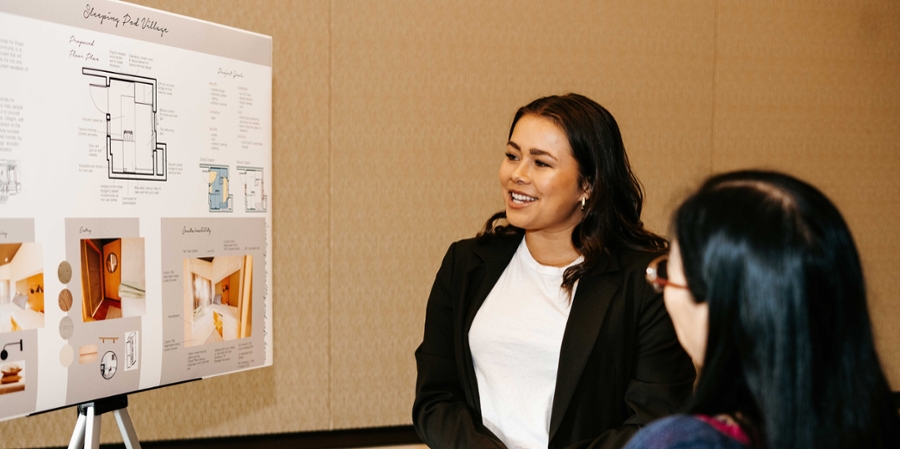
Q: What advice would you give other interior design students?
Ilinahe: The advice I would give to other interior design students is not to limit yourself. Say “yes” to things that make you uncomfortable or that seem extraordinary because you do not know what possibility or connection could arise for it. Let yourself experience the different avenues of interior design, whether it is residential, commercial or international design.
Q: What is your goal after graduation?
Ilinahe: After graduation, my goal is to travel for interior design or work for a firm to gain experience. Personally, I have not decided on pursuing residential or commercial interior design because I am now open to the possibility of international interior design. Wherever work leads me, I want to focus on incorporating sustainability and biophilia into my designs.
Julieanna: My goal after graduation is to work for a commercial firm working on low-income housing, education and hospitality projects. I hope to help people and create change in this world.
Q: How has the interior design program and these presentations helped you prepare to enter the field?
Ilinahe: The interior design program and these presentations have helped me grow to be a confident designer, enhance my program skills (Revit, Enscape, AutoCad), and connect with communities and clients to execute their dreams into reality.
Julieanna: This program and presentations like this are exactly what got me my internship at Ankrom Moisan Architects in Portland. I’ve gotten to experience the industry outside of college, and I owe it all to this program and all the presentations that come with it.

